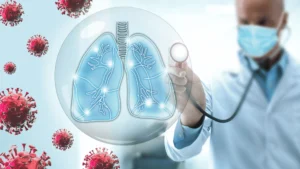Various Reasons of Bruised Lung and How is it Treated?
Introduction
A bruised lung, also known as a pulmonary contusion, is a condition that occurs when the lung tissue is injured. It is a serious and potentially life-threatening condition that can be caused by various factors. Understanding the symptoms, causes, diagnosis, and treatment options for a bruised lung is crucial in order to seek prompt medical attention and receive appropriate care. In this article, we will explore the different aspects of bruised lung, providing a comprehensive overview of this condition.

Symptoms
When an individual experiences a bruised lung, several symptoms may manifest. These symptoms can vary in severity depending on the extent of the injury. Common symptoms include:
- Chest pain, which may worsen with deep breathing or coughing
- Shortness of breath
- Coughing up blood or bloody sputum
- Difficulty breathing
- Bluish coloration of the lips or fingers
- Rapid breathing or increased heart rate
Causes
Bruised lungs can occur due to various causes. The most common cause is blunt trauma to the chest, such as from a car accident, fall, or sports injury. The impact can cause the lung to forcefully collide with the rib cage, leading to tissue damage. Other potential causes include:
- Penetrating injuries, such as gunshot or stab wounds
- Severe coughing fits
- Chemical inhalation or exposure
- Mechanical ventilation complications
It is important to note that even minor trauma can cause a bruised lung, as the lung tissue is delicate and susceptible to injury.
Diagnosis
To diagnose a bruised lung, a healthcare professional will conduct a thorough examination and assess the patient’s medical history. Diagnostic tests are also essential in confirming the condition. These tests may include:
- Chest X-ray to assess for signs of lung contusion
- CT scan to obtain more detailed images of the lungs
- Pulmonary function tests to evaluate lung function
- Arterial blood gas analysis to measure oxygen and carbon dioxide levels in the blood
In some cases, additional tests or consultations with other specialists may be necessary to rule out other potential injuries or complications.
Treatment
The treatment of a bruised lung primarily focuses on supportive care to allow the lung tissue to heal naturally. Treatment options may include:
- Pain management medications to alleviate discomfort
- Oxygen therapy to ensure adequate oxygen levels in the blood
- Intravenous fluids to maintain hydration
- Breathing exercises and techniques to improve lung function
- Closely monitoring and observing the patient’s condition
In severe cases, hospitalization and intensive care may be required, especially if complications such as pneumothorax (collapsed lung) or pulmonary edema (fluid accumulation in the lungs) occur. It is vital for individuals with a bruised lung to follow their healthcare provider’s instructions and attend follow-up appointments to ensure proper healing.
Contacting a Doctor
If you suspect a bruised lung or experience any symptoms mentioned earlier, it is crucial to seek immediate medical attention. Contact your healthcare provider, local emergency services, or visit the nearest emergency room. Early diagnosis and treatment significantly improve the chances of a successful recovery from a bruised lung.
FAQ
Q: Can a bruised lung be fatal?
A: While a bruised lung can be a serious and potentially life-threatening condition, the prognosis is generally favorable with appropriate medical care and support. However, complications or delayed treatment can increase the risk of severe consequences.
Q: How long does it take to recover from a bruised lung?
A: The recovery time for a bruised lung varies depending on the severity of the injury and the individual’s overall health. In most cases, it takes several weeks to fully recover. Follow the guidance of your healthcare provider and engage in any recommended rehabilitation exercises to promote healing.
Q: Can I prevent a bruised lung?
A: Some causes of a bruised lung, such as accidents or unforeseen events, cannot be entirely prevented. However, taking precautions, such as wearing seatbelts, practicing proper safety measures during physical activities, and seeking medical attention promptly for respiratory symptoms, can help reduce the risk of a bruised lung.
Summary
A bruised lung can result from various causes, including blunt trauma or severe coughing fits. It is essential to recognize the symptoms, such as chest pain and shortness of breath, to ensure timely diagnosis and treatment. Diagnosing a bruised lung involves medical exams and imaging tests. Treatment primarily focuses on supportive care, with pain management and oxygen therapy being common approaches. If you suspect a bruised lung, it is crucial to contact a doctor promptly for proper evaluation and care.